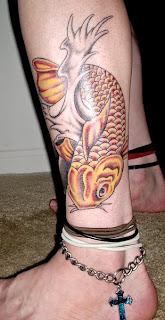(With thanks to
The Pastel Journal where this was originally published.)
At Rest, 12" x 9"The drape of leaves, like the folds of fabric covering a model, is dependent on the form beneath. Unlike the hard skeleton, foliage is gentle and flowing, wrapped over and around the structure of a tree. We’ve analyzed the trunk and branches of the tree and now we need to spend time looking at the leaves clothing the tree in softness and color.
Foliage can be seductive, often tempting the artist to over-detail each leaf in an effort to describe the complexity found there. Painting foliage should be like writing poetry, a simple, spare means of describing the details of the mass of leaves, one that evokes the soft resonance of the wind stirring the tree to life. The Japanese poetry called haiku might be the best model to use, a simple and stylized impression that’s brief but powerful, rather than a novel that laboriously describes each detail.
Instead of painting every leaf, find a stroke you can use to suggest the overall effect of the leaves. This might be a quick squiggle that hops and jumps over the paper, a slanting, repetitive stroke, or a random scribble that, when repeated, becomes a pleasing mass. Painting every single, meticulous, little leaf can be a dull activity for artist and viewer alike.
Use texture and color to indicate fine points in the mass of the tree. Instead of detailing the entire canopy, find particular places where you can use a detailed stroke to indicate the shape and pattern of the leaves. Think of the general shape of the leaves, long and thin ones on a willow, round and compact ones on a cottonwood, and develop a stroke that mimics the leaf shape well but does not require each leaf to be painted. Use this detailed stroke at the edge of the foliage against the clear sky, where a dark mass of foliage meets a lighter one, or where there’s a dramatic color change. These are the areas of interest that indicate the amount and type of leaves.
SKETCHING
Begin by sketching in the tree as one whole shape, a simplified geometric outline of a triangle, circle or oval. A pine might be a triangle, while an oak is an oval or circle. Find the outside edges of the entire tree, even if it’s off the top or sides of the paper, and make light marks that encompass it from top to bottom and side to side. This will help you keep from making the tree duck down, as if the top of the paper is a low ceiling, as well as helping you find the correct scale of it in relation to other objects in the painting.
Now sketch in the outline of the overall balloon of the foliage, as separate from the trunk. This time avoid a perfectly geometric shape. Instead find the rhythm of the tree, where it leans or bends, where gaps occur. Look for the gesture of the tree, as it leans in the wind or reaches tall and straight to the sky
The close-up at right shows the many colors used beneath the green foliage, as well as the detailed edge strokes of dark and light suggesting leaves.
Now locate the various branches and the large clusters of leaves they support, as defined by the light and shadow on them. If there’s a major branch, it will bear a major cluster of leaves. Likewise, if there’s a balloon of foliage it must have a branch from which it sprouts. Don’t leave one without the other. Remember that the smallest branches, numerous tiny twigs that each has a small bouquet of leaves, mass together to hold the foliage. Most of the time you won’t see these little branches amid the mass, except where they occasionally project, adding a variety of texture. Often a cluster of foliage will fall in front of large branches and obscure them, but it’s best to know where these branches occur, whether or not you see them clearly when finished. Usually there’s some evidence of them peeking between the leaves, as well as above or below the mass. Smaller branches weaving through the leaves can move the eye, enhancing the sense of three dimensions.
PAINTING FOLIAGE
Although there are many ways to approach painting foliage, one way is to lightly paint in a layer of color all over using a medium value, and then divide that up into the smaller foliage balloons. An open stroke, using the flat side of the pastel stick, is particularly good for this part of the painting. After establishing the overall tone of the tree, whether it’s green, yellow, or any other color, use a warmer, slightly lighter color for the areas in light and a cooler, darker color for those in shade. This light and shadow should show which foliage balloon rests in front and which is behind.

Negative shapes are an important consideration in painting a tree. Sky holes can be particularly beautiful, allowing a peek at the clouds, sky or land behind the tree, adding contrast and sparkle to the mass of foliage. Look for the syncopated rhythms of these holes, where clusters of leaves divide and light shines through. Design the movement of the eye through the trees using these breaks.
Green is a color that seems to perplex some artists. You may find you have a vast collection of green pastels that you’ve gathered in an effort to find the ‘right’ green. If you need to solve the green dilemma, try using warm colors beneath and amid the green. Dash in some orange or add a stippling of purple, red or ochre. The use of complements and near-complements jazzes up the color, exciting the visual receptors in the eye and relieving the sameness of green.
FOCAL AREA AND BACKGROUND TREES
Consider how warm, light colors appear to advance and cool, dark colors seem to recede. Use this principle to give the tree depth. As you paint your tree, establish a focal area, often using warm, light colors. Contrast that with an area in shadow behind it where you can layer cool colors, creating a visual tension that further enhances the focus. Be sure to include other foliage that overlaps, dark over light and light over dark, though to some slightly lesser degree.
Also consider the fact that inside the dense foliage of a tree there’s very little light. Look for dark shadows cast in the center of a tree and the light outside on the foliage. Different varieties of trees show this to varying degrees, some more open and light while others are dense and dark. Analyze the tree you’re painting with this in mind.
Remember that intense colors attract the viewer’s eye, pulling them visually to this area. Often this, coupled with an area of high contrast, will be the place where the eye goes first. You must then move the eye through the tree, often in a vaguely circular or oval pattern, enhanced by a detailed edge. Conversely, you can create a sense of distance by diminishing contrast, detail, edges and intensity. In a very large grove of trees, the farthest ones will be quieter, less intense and detailed, while the nearer trees will have a clarity and brightness that plainly establishes them as standing in front.
Patterns are useful in suggesting trees at a distance. Repeat the characteristic overall shape of the trees, whether tall and thin, triangular or rounded, and use muted light and shadow to indicate a tree-covered hillside or distant grove. Overlap near shapes over far ones and use accurate scale to improve the sense of depth. Remember, however, that patterns can also work against you, becoming lifeless and boring. Avoid unconscious patterns that make your painting dull, with no sparkle of life. The distant hillside has a supporting role but should not become flat and tiresome in its sameness. Work to achieve an interesting quietness that enhances the focal area of your painting in a strong way, but isn’t jumbled and distracting.
When you’re painting a grove of trees, be sure to vary the values, as well as the sizes and shapes of the trees, while allowing for repetition in trees of the same species. Don’t let every tree lean in the same direction unless it’s a characteristic of strong wind, such as the famous trees at Torrey Pines in California. Even then, don’t repeat the same forms over and over. Vary the shape as well as the texture of trees standing in a group, to some degree.
The old growth forests have developed a canopy of foliage that virtually blocks out sunlight beneath the trees, leaving a floor of mossy mulch and ferns that grow well in shade. When painting this kind of forest look for the deep shade of the floor and the brilliant contrast of sunlight in foliage above.
FLOWERING TREES

Flowering trees take on a soft, floating quality, newly dressed in a lacy veil of petals and soft, young leaves. The value of the tree is generally lightened when it flowers, often pastel pink or dazzling variations on white. This gives an opportunity to stretch your range of colors as you layer a great variety of them together to form the clouds of flowers on various branches. Look for a softer stroke that can indicate the petals, usually one that’s lazier and not as vigorous as that used for leaves alone.
Don’t forget that flowers adopt the habit, as do leaves, of growing in a spiraling pattern around each branch. You’ll notice that there’s a bit more contrast in a flowering tree, usually due to the darkened color of the branches in springtime growth, which are more apparent throughout the tree. Because flowers aren’t as dense as leaves, there isn’t as much shade in the interior of the flowering tree. Paint these springtime blossoms with a light, quick stroke to achieve the fluttering quality of the breeze moving them. Scatter petals across the ground, as well, where the wind deposits them.
Springtime Reds, 18" x 12”
FALL TREES
In the fall trees turn an amazing variety of colors, from blazing orange, red and yellow-gold to russet, ochre, and greenish-yellow, all the way to deep purplish-red. This is the time when you can devote your paintings to color, but be careful not to heighten the color of all the trees and miss the subtleties that let the colors resonate. Contrast bright colors with quiet colors, allowing the light to pick out one tree or a small grove standing against more muted, distant ones.
Fall Tree, 12" x 9"
All of the general rules for trees apply in the autumn, with a slight shift toward a lighter value in some cases, such as aspens. Trees that were medium in hue when they were clothed in green might change to a medium-light value when wearing yellow leaves, although at various times there can be blend of green and yellow that necessitates only a slight value shift.
It may be a good idea to use a colored filter to compare the values of the tree standing in nature, the photograph if you’re using one, and your painting. Use a blue filter if your trees are red, since a red filter will make red appear white, or a red one if the trees are green or yellow. The filter allows you to analyze the values in context with the rest of the painting so that you can clearly see how light or dark different parts of the tree are.
Your autumn painting might include trees that are beginning to lose their leaves, opening up the foliage and allowing more gaps where the braches and sky shows through. This can make for an exciting effect as the contrast in value and intensity between the fall leaves and the sky is quite beautiful. Remember to include fallen leaves on the ground, which are usually more muted in color and value because they have lost their vibrancy.
PINE TREES
Santa Fe Pine, 12" x 9”
Pine trees come in many varieties, from blue spruce to piñon to towering ponderosa pines, but all share some common traits. The general value of pine trees is medium-dark to dark, depending on the light source and the time of day. Shade the green of pines with a drift of orange in the sunlight and a hint of purple in the shadows, to excite the green. Pines usually grow well only at certain altitudes, so you find one type predominating in most areas, though there can be a mix of one or two varieties, as well. Pines generally don’t have an open growth pattern but are dense and closed, except at the very outside edges. A few pines tend to grow in a slightly more open pattern, especially long-needled ones. The classic ‘Christmas tree’ shape, a wide-based triangle, is characteristic of only a few pines. Most tend to have a much more cylindrical shape and taper only slightly at the crown of the tree. Analyze the overall shape before painting a pine tree and throw out any preconceived ideas you have.
Mastering the art of painting trees is necessary for the landscape painter and requires time spent observing them and time at the easel painting. One of the advantages of painting trees is that at different times of the day and in different seasons the same tree can take on such different characteristics, giving you a great diversity of subject matter in one place. When you’ve found a tree you admire, spend time studying it. Do you particularly enjoy the shape of the tree, the gesture of the trunk, the pattern of the branches, the shadows it casts in a certain light? Does the fall color excite you? Or is it the lacy dress of flowers on it in the springtime? Whatever it is about the tree that attracts you, return to it to practice seeing and recording its beauty.
Find your own voice, the poetry that describes the boldness or delicacy of the tree, spoken as only you can say it, and use it to describe the diversity and beauty in your rendering of trees.
Los Poblanos Autumn, 12" x 9"
 San Carlos, 12" x 12"
San Carlos, 12" x 12"





















































